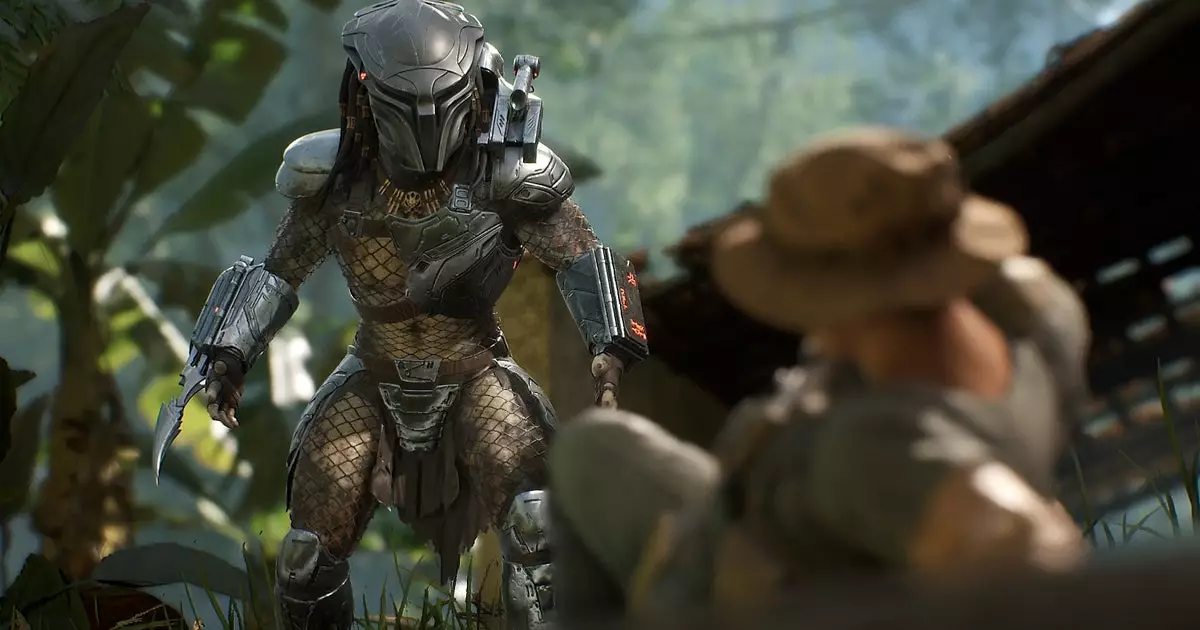The world of video games is notorious for its ever-expanding canon, frequently traversing into the realms of multiple genres and narratives. Recently, Arrowhead’s CEO Johan Pilestedt made headlines with aspirations that have captured the attention of gamers and industry insiders alike. The tantalizing possibilities of crossovers, particularly with Helldivers 2, hint at an ambitious expansion into a multi-franchise playground. However, while the notion of blending recognizable IPs into a cohesive gaming experience excites fans, it also raises pertinent questions about the future of these beloved franchises.
The entertainment industry has seen a significant trend towards the integration of diverse intellectual properties (IPs), with gaming leading the charge. Pilestedt’s musings suggest a hunger for crossover experiences reminiscent of the cinematic universes thriving in movies today. From beloved classics such as Aliens and Starship Troopers to cult hits like Fifth Element, the potential for blending these narratives into the Helldivers universe is enticing. Yet, this unbridled ambition can lead to a perilous line between homage and dilution of the original material.
One must consider how history has shaped the perception of crossovers. When executed thoughtfully, these integrations can yield revolutionary experiences, but they risk losing the identity of the original games if mishandled. Recent examples in the industry highlight both the astounding successes that come from such collaborations, as well as the monumental failures that stem from sloppily constructed narratives that blur the essence of the source material.
The Risks of Overextension
While Pilestedt acknowledges the potential pitfalls of jamming various third-party licenses into Helldivers 2, there’s an undeniable temptation to chase novelty. His comments regarding concerns over diluting the IP reveal an awareness of the thin ice developers walk when mixing various universes. Indeed, the very essence of what makes Helldivers unique could be compromised if the game strays too far into the territory of its inspirations.
Notably, Pilestedt’s mention of wanting to integrate a plethora of established franchises may yield thrilling insights for gamers. Yet, one must ponder: will this come at the cost of Helldivers’ distinct identity? Is President Pilestedt merely envisioning a multicultural approach to gaming, or is this an imperialistic drive to broaden the domain of his creation at the expense of others?
Whether his proposals can inject freshness into the game or merely transform it into a chaotic mash-up remains to be seen. Furthermore, integrating iconic foes, like the xenomorphs or Stormtroopers, necessitates a careful exploration of how these characters can flourish within Helldivers’ unique gameplay and thematic elements without feeling shoehorned in.
While concerns linger about IP dilution, there are intriguing possibilities that could arise from integrating familiar franchises. For instance, what if the mechanics allowed for team dynamics driven by these various characters? Imagine incorporating a Terminator-like ally within Helldivers—this could not only revolutionize gameplay but also enrich narrative depth.
Moreover, adapting the Warhammer 40K universe could ignite unprecedented imaginative spark. The idea that players could manifest as Dreadnoughts adds an exhilarating layer and depth not just to combat but to collaboration within the gameplay. Similarly, creating multifaceted interactions with iconic foes could lead to unexpected surprises that deepen engagement with Helldivers’ foundational mechanics.
The concept of introducing telepathic communication with the bugs from Starship Troopers adds a comedic and strategic element that could delight players. This imaginative leap not only invokes nostalgia but also allows for innovative storytelling techniques that can keep players invested.
The ambitions of Johan Pilestedt concerning Helldivers 2 and its prospective expansions represent an exciting but complex landscape for game developers. As the gaming community eagerly anticipates innovative crossovers, developers must carefully navigate the equilibrium between honoring original sources and creating captivating new experiences. The success of these endeavors rests on their ability to blend familiar elements in a way that respects the essence of each IP while simultaneously generating fresh content. Only time will tell if this ambitious vision pays off or becomes another example of an idea that soared too close to the sun, risking the very essence of what gaming fans hold dear.

